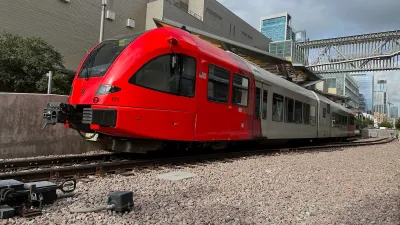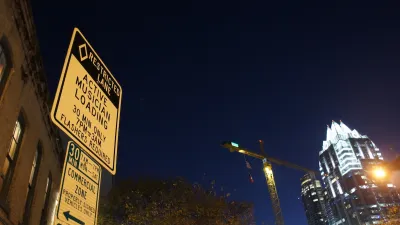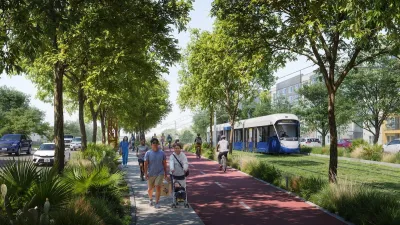A clear, detailed explanation of community land trusts—a growing model for retaining affordable housing and neighborhood character in the face of gentrification pressures.
Alana Semuels writes about the strength of community land trusts in combating gentrification and providing affordable housing and other community benefits.
Semuels starts the story with the example of the Guadalupe Neighborhood Development Corporation (GNDC), which is working in East Austin and recently enabled the first community land trust home in the state of Texas. "Mary Ybarra bought the home for $150,000 in 2012, and pays $815 a month on her interest-free mortgage. (GNDC loaned her the money, since it was difficult to get a loan for a land-trust home.) At the time, nearby homes were going for $350,000, which would have been out of reach for Ybarra, a single mother who works as an administrator in an office."
Semuels also includes a lot of clear passages to explain how community land trusts work. SO according to Semuels's explanation, a community land trust is "a local nonprofit acquires a parcel of land and pledges to use it for purposes that benefit the neighborhood, whether that be food production or affordable housing." Samuels continues with the explanation:
"In the housing model, the nonprofit builds a home on the land and sells it to someone in need. But the nonprofit retains ownership of the land that the house sits on, leasing it to the homeowner for a designated time period, typically 99 years. Dividing the structure from the land has two important benefits: It ensures that the land won’t be sold to developers by keeping it in the community’s possession, but still allows people to buy a home and earn equity on the structure."
The article goes into a lot more detail about the kinds of neighborhoods where community land trusts are working as well as some of the regulatory and market hurdles they face in achieving success.
FULL STORY: Affordable Housing, Always

Alabama: Trump Terminates Settlements for Black Communities Harmed By Raw Sewage
Trump deemed the landmark civil rights agreement “illegal DEI and environmental justice policy.”

Study: Maui’s Plan to Convert Vacation Rentals to Long-Term Housing Could Cause Nearly $1 Billion Economic Loss
The plan would reduce visitor accommodation by 25% resulting in 1,900 jobs lost.

Why Should We Subsidize Public Transportation?
Many public transit agencies face financial stress due to rising costs, declining fare revenue, and declining subsidies. Transit advocates must provide a strong business case for increasing public transit funding.

Paris Bike Boom Leads to Steep Drop in Air Pollution
The French city’s air quality has improved dramatically in the past 20 years, coinciding with a growth in cycling.

Why Housing Costs More to Build in California Than in Texas
Hard costs like labor and materials combined with ‘soft’ costs such as permitting make building in the San Francisco Bay Area almost three times as costly as in Texas cities.

San Diego County Sees a Rise in Urban Coyotes
San Diego County experiences a rise in urban coyotes, as sightings become prevalent throughout its urban neighbourhoods and surrounding areas.
Urban Design for Planners 1: Software Tools
This six-course series explores essential urban design concepts using open source software and equips planners with the tools they need to participate fully in the urban design process.
Planning for Universal Design
Learn the tools for implementing Universal Design in planning regulations.
Smith Gee Studio
Alamo Area Metropolitan Planning Organization
City of Santa Clarita
Institute for Housing and Urban Development Studies (IHS)
City of Grandview
Harvard GSD Executive Education
Toledo-Lucas County Plan Commissions
Salt Lake City
NYU Wagner Graduate School of Public Service





























